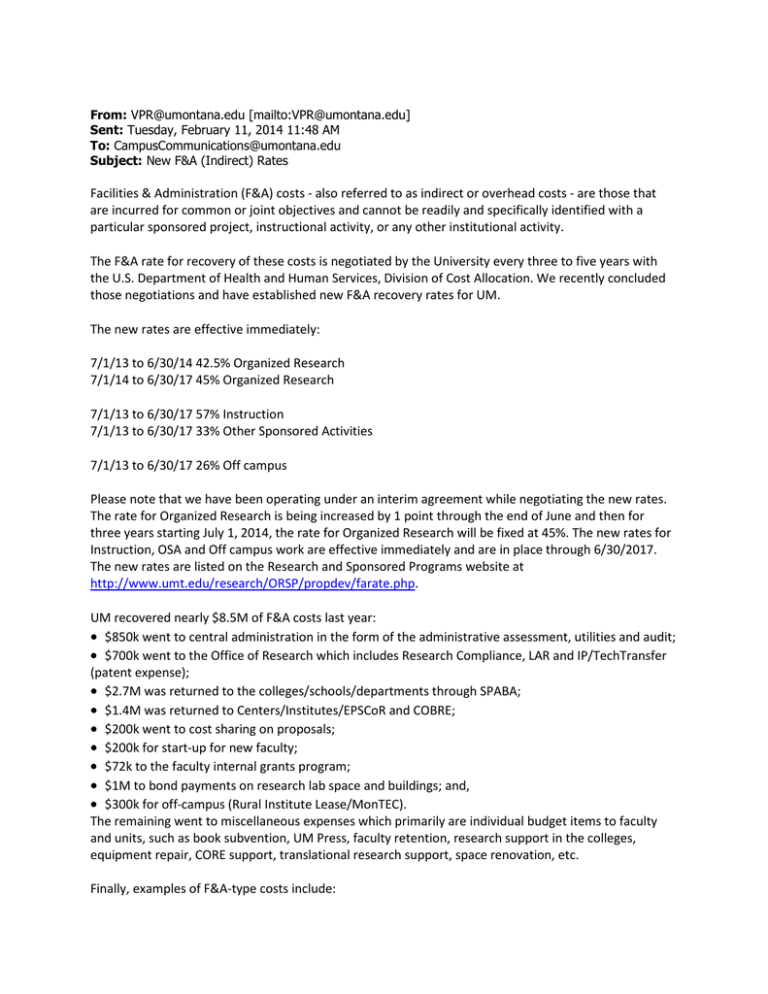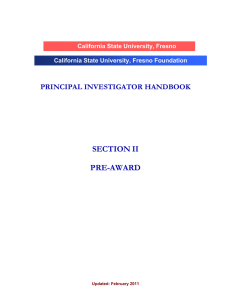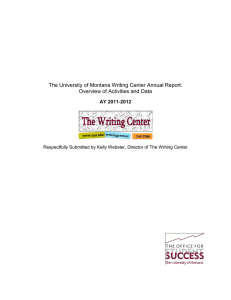Document 11913708
advertisement

From: VPR@umontana.edu [mailto:VPR@umontana.edu] Sent: Tuesday, February 11, 2014 11:48 AM To: CampusCommunications@umontana.edu Subject: New F&A (Indirect) Rates Facilities & Administration (F&A) costs - also referred to as indirect or overhead costs - are those that are incurred for common or joint objectives and cannot be readily and specifically identified with a particular sponsored project, instructional activity, or any other institutional activity. The F&A rate for recovery of these costs is negotiated by the University every three to five years with the U.S. Department of Health and Human Services, Division of Cost Allocation. We recently concluded those negotiations and have established new F&A recovery rates for UM. The new rates are effective immediately: 7/1/13 to 6/30/14 42.5% Organized Research 7/1/14 to 6/30/17 45% Organized Research 7/1/13 to 6/30/17 57% Instruction 7/1/13 to 6/30/17 33% Other Sponsored Activities 7/1/13 to 6/30/17 26% Off campus Please note that we have been operating under an interim agreement while negotiating the new rates. The rate for Organized Research is being increased by 1 point through the end of June and then for three years starting July 1, 2014, the rate for Organized Research will be fixed at 45%. The new rates for Instruction, OSA and Off campus work are effective immediately and are in place through 6/30/2017. The new rates are listed on the Research and Sponsored Programs website at http://www.umt.edu/research/ORSP/propdev/farate.php. UM recovered nearly $8.5M of F&A costs last year: • $850k went to central administration in the form of the administrative assessment, utilities and audit; • $700k went to the Office of Research which includes Research Compliance, LAR and IP/TechTransfer (patent expense); • $2.7M was returned to the colleges/schools/departments through SPABA; • $1.4M was returned to Centers/Institutes/EPSCoR and COBRE; • $200k went to cost sharing on proposals; • $200k for start-up for new faculty; • $72k to the faculty internal grants program; • $1M to bond payments on research lab space and buildings; and, • $300k for off-campus (Rural Institute Lease/MonTEC). The remaining went to miscellaneous expenses which primarily are individual budget items to faculty and units, such as book subvention, UM Press, faculty retention, research support in the colleges, equipment repair, CORE support, translational research support, space renovation, etc. Finally, examples of F&A-type costs include: • services by Purchasing, Human Resource Services, Facility Services, Business Services, and the like; • use of office and/or laboratory space and equipment; general use supplies; heat, light, power and janitorial services, etc.; and, • time spent by academic departments, deans' offices, ORSP, Library Services, etc. The intent and purpose of F&A recovery is to reimburse the institution for costs incurred to support research. The effective F&A recovery is considerably lower than the real costs incurred. The University further subsidizes research when a reduced, non-standard F&A rate is applied to a project. While there are circumstances where a reduced F&A rate may be appropriate, the reality is that the use of reduced F&A rates imparts a real cost to the university. Per Montana University System Board of Regent Policy 404 - Indirect Cost Recovery Rate, the University seeks to recover all Facilities & Administrative (F&A) allowed by the sponsor. In instances where sponsors do not allow UM's full negotiated F&A rate, partial recovery will be allowed with adequate documentation.

